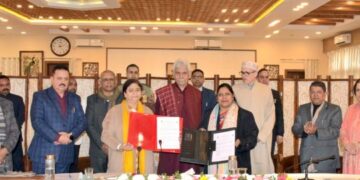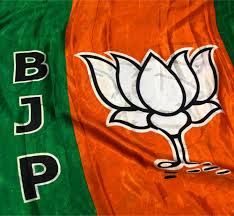Srinagar: Jammu and Kashmir Bank MD and CEO Amitava Chatterjee on Monday said the flash floods caused by heavy rains a couple of months earlier have delayed the completion of hydel power projects in the Union Territory by three to five months.
He, however, said that while there was no direct impact of it on the bank as of now, there was a possibility of cost overrun in these projects.
Jammu and Kashmir has been battered by a series of natural calamities like cloudbursts, extremely heavy rains and huge landslides in the past couple of months, which left several dead, flattened infrastructure, and upended normal life.
“Most of the infrastructure projects, like the hydel (power) projects which are in progress in the state, are being delayed by three to five months. That is the negative impact that has happened (due to rains and floods).
“We had a review recently. The DCCO (Date of Commencement and Commercial Operations) has been impacted by three to five months, which will impact the commercial production, and that will again have a negative impact,” Chatterjee told PTI in an interview.
However, he said, there is no direct impact of it on the bank. “Our funding is in place. Mostly, in all these units, we have a share from our bank. The progress has been halted, but I don’t see a major cost overrun. I have spoken to these (executing) companies, and they can fund it on their own.”
There are five major power projects with a combined generation capacity of nearly 3,100 megawatts, which are currently at various stages of construction in Jammu and Kashmir. These projects include Ratle (850 MW), Pakal Dul (1,000 MW), Kiru (624 MW), Kwar (540 MW) and Parnai (38 MW).
Four of these five projects are on the Chenab river or its tributaries in Kishtwar district, which was severely affected by the cloudburst and heavy rains in August this year. Only the Parnai power project is located in Poonch district.
More than 60 people died while 300 others were injured in the cloudburst at Chositi in Kishtwar district on August 14.
Asked if the bank has seen any surge in borrowings from the flood-affected areas, Chatterjee said there has not been any indication of such a thing.
“They have not come as an opportunity yet. All (rehabilitation) efforts are being taken care of at a level where they have not asked for any funding from the bank,” he added.
Chatterjee said the inclement weather and the closure of the national highway did affect the horticulture sector in the Valley, but the people have shown resilience and are heading back to normalcy.
“It would be wrong to say it has not affected. It has affected, but not to the extent I had expected. The Union Territory government has declared this event as a disturbed geography for the purpose of application of the RBI’s master policy on agriculture. We have already implemented it. So far, only 85 units have come to us with a request for rehabilitation.
“Now consider that almost 2.35 lakh units are eligible for it, for a total amount of Rs 16,000 crore — that is the basket that is available. But only 85 people have come. That shows the resilience in the people in this economy,” he added.
Chatterjee said people have been affected adversely as the revenue streams have slowed down.
“I have spoken to the business people here, especially from the tourism industry; it has been very badly affected. Tourists are coming, but they are generally budget tourists; the high-end tourists are not yet coming here. It will take some time for this to totally recover,” he said.
Chatterjee said he was very hopeful that the economy would be able to recover.
“As a bank, we will be providing all kinds of relief. That will have two impacts — it will help the business directly to get up and running once again through our support, and the application of that master circular will reduce the stress in our accounts. Both ways will be beneficial,” he said.
Reflecting on the second quarter results, which were released last week, the MD said the growth story of the bank was going strong.
“If you are talking about profits, you need to understand there was a one-time impact of the merger of Ellaquai Dehati Bank with JK Grameen Bank. As per the latest RBI guidelines, we had to provide for investment impairment of Rs 180 crore during this half-year.
“If you add back that Rs 180 crore, the profit is 20 percent. Effectively, the growth story is extremely good. If you look at what has happened in quarter two as far as the top line is concerned, both in deposits and advances, we have grown better than what we had grown last year,” he said.
Chatterjee said the regional rural bank that was merged with JK Grameen Bank was in very bad shape, but has now been turned around.
“It has posted profits for this quarter. There is another positive that we will be able to write back these provisions in subsequent quarters. So, that will again add to the profits,” he said.
On NPAs, the bank MD said, “We have brought the NPAs below three per cent and are on course to bring it on par with the industry standard of less than two per cent by the end of the current fiscal”.
Chatterjee said the bank was on course for another year of record profits as all guidance for the 2025-26 fiscal year was being achieved so far.
“The guidance that we have given, I am sure we will achieve 12 percent improvement in credit top line, 10 percent improvement in liability, and another record profit. We would have been much better placed if not for the impairment provision for the regional rural bank,” he added.







